ABA Law Practice Today — Attorney Professional Development Goals by Generation
![]() Authoring this blog post after serving as an issue editor for the Professional Development edition (February 2025) of the American Bar Association’s Law Practice Today webzine, I suddenly was having a sense of déjà vu. Turns out I was the issue editor of LPT’s multigenerational and multicultural issues nearly 10 years ago, in March 2015. I had little recollection of it. You can even compare what I wrote on the subject matter a decade ago in Law Firm Management Struggles with Multi-Generational Issues. News flash: We’ve been discussing this for well over a decade now.
Authoring this blog post after serving as an issue editor for the Professional Development edition (February 2025) of the American Bar Association’s Law Practice Today webzine, I suddenly was having a sense of déjà vu. Turns out I was the issue editor of LPT’s multigenerational and multicultural issues nearly 10 years ago, in March 2015. I had little recollection of it. You can even compare what I wrote on the subject matter a decade ago in Law Firm Management Struggles with Multi-Generational Issues. News flash: We’ve been discussing this for well over a decade now.
There is significant overlap between business development and professional development within a law firm. During the four years I chaired the ABA’s Standing Committee on Continuing Legal Education (SCOCLE), and the seven years in total I served on the committee, I was involved with the Professional Development Consortium as well. Every law firm is different in the way they incorporate BD into PD, and at what stage. In a conversation I had recently with a law firm PD professional, she tossed a bunch of enlightening (if not scary) statistics at me regarding incoming attorney classes—how short their stay at the firm will likely be, demands for WFH (look it up, of you don’t know it already), work-life balance, and other “asks” that would’ve ensured I never got a job in an interview when I was getting out of law school (circa early 90s…1990s, not 1890s). But times have changed. I recently read a Law360 article with tips on how associates can thrive in a hybrid work environment…realizing that those “tips” were from a Big Law partner around my age (again 1900s, not 1800s, and certainly not 2000s)…and were what he would do, not necessarily what a young associate might find helpful.
If I’m issue editing the subject another 10 years from now, in 2025, something went drastically wrong with my retirement plans. But it will be interesting to see how things might change, or don’t.
 Marketing Attorney Blog
Marketing Attorney Blog


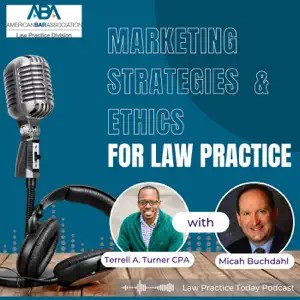 In the January 20, 2025, episode of the American Bar Association’s Law Practice Podcast, host Terrell Turner discusses the complexities of legal marketing with me in this 30-minute discussion available on americanbar.org as well as in your favorite podcast library, including Spotify and Apple.
In the January 20, 2025, episode of the American Bar Association’s Law Practice Podcast, host Terrell Turner discusses the complexities of legal marketing with me in this 30-minute discussion available on americanbar.org as well as in your favorite podcast library, including Spotify and Apple. In recently reviewing a law advertising campaign, I found myself saying that we need to run this on
In recently reviewing a law advertising campaign, I found myself saying that we need to run this on  In the July 25, 2023 edition of
In the July 25, 2023 edition of 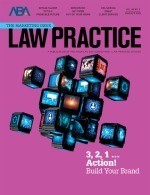 In my March/April 2023 marketing column in the American Bar Association’s Law Practice Magazine, I address the pros and cons of organizational involvement in
In my March/April 2023 marketing column in the American Bar Association’s Law Practice Magazine, I address the pros and cons of organizational involvement in 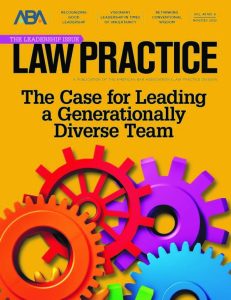
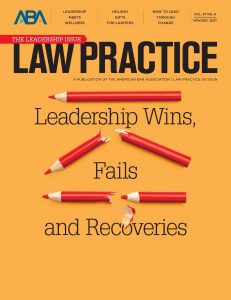 The third annual Up-Down Drill, which played off my favorite morning-after column in The Philadelphia Inquirer after an Eagles game (why did Jeff McLane stop doing it?), was one of the more difficult to write. In the November/December 2021 issue of Law Practice,
The third annual Up-Down Drill, which played off my favorite morning-after column in The Philadelphia Inquirer after an Eagles game (why did Jeff McLane stop doing it?), was one of the more difficult to write. In the November/December 2021 issue of Law Practice, 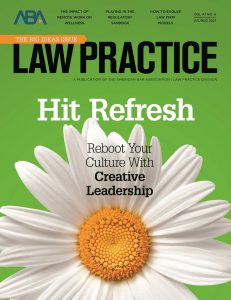 Yes, I went with the lowest hanging fruit of topics for my marketing column in the July/August 2021 issue of Law Practice,
Yes, I went with the lowest hanging fruit of topics for my marketing column in the July/August 2021 issue of Law Practice, 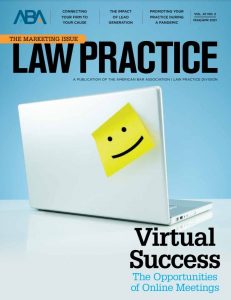 Earlier this week, I read an interesting article about how business travel will never fully return, because you can just go on Zoom, saving a ton of time and money. The story and premise all made sense until a quote at the end saying that the first time someone lost a sales pitch to a competitor that presented in-person—they’ll be right back on those airplanes. And I shook my head knowing that was so true.
Earlier this week, I read an interesting article about how business travel will never fully return, because you can just go on Zoom, saving a ton of time and money. The story and premise all made sense until a quote at the end saying that the first time someone lost a sales pitch to a competitor that presented in-person—they’ll be right back on those airplanes. And I shook my head knowing that was so true.